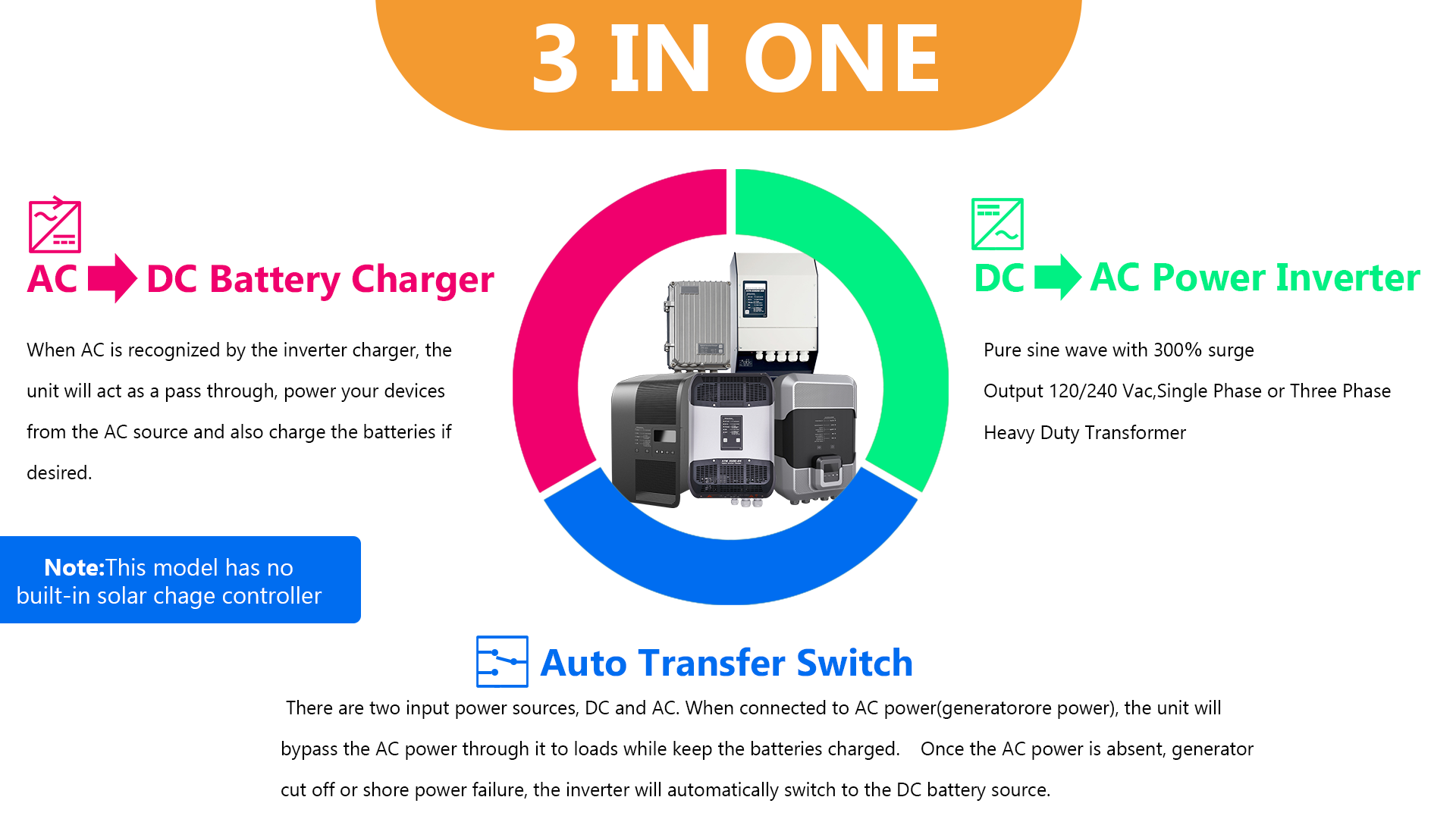
What is automatic transfer swtich
An auto transfer switch (ATS) is a device used in electrical systems to automatically transfer power supply from one source to another in the event of a power outage or other disruptions. Here's how it typically works:
1.Primary Power Source: The primary power source is usually the utility grid or the mains power supply. When this power source is functioning normally, the ATS allows electricity to flow from the grid to your home or facility.
2.Backup Power Source: The backup power source could be a generator, battery bank, or an inverter connected to renewable energy sources like solar panels. This backup power source is usually kept in standby mode, ready to kick in when needed.
3.Detection of Power Failure: The ATS continuously monitors the primary power source. If it detects a loss of power (such as during a blackout or outage), it triggers the transfer process.
4.Automatic Transfer: Once a power outage is detected, the ATS swiftly switches the electrical load from the primary power source to the backup power source. This transfer happens automatically and typically within milliseconds to ensure uninterrupted power supply to critical loads.
5.Return to Normal Operation: When the primary power source is restored, the ATS switches the electrical load back from the backup power source to the primary power source. Again, this transition happens automatically.
ATSs are commonly used in residential, commercial, and industrial settings to provide seamless backup power during power outages, ensuring that essential equipment and systems remain operational. They play a crucial role in maintaining continuity of operations and minimizing downtime.
What is inverter with automatic transfer swtich
An inverter with an auto transfer switch combines the functionality of an inverter and a transfer switch into a single unit. Here's how it works:
1.Inverter Functionality: Like a regular inverter, this device converts DC (direct current) power from a battery or solar panels into AC (alternating current) power that can be used to run household appliances and electronics.
2.Transfer Switch Functionality: The auto transfer switch component detects when there is a loss of utility power (such as during a blackout or outage). When utility power fails, the transfer switch automatically disconnects your home or facility from the grid and connects it to the power provided by the inverter. This ensures that your critical loads continue to receive power even during an outage.
3.Automatic Operation: The key feature of an inverter with an auto transfer switch is its automatic operation. You don't need to manually switch between utility power and inverter power when there's an outage—the device handles the transfer seamlessly.
4.Return to Grid Power: When utility power is restored, the auto transfer switch will automatically disconnect the inverter power and reconnect your home or facility to the grid. Again, this happens without any manual intervention.
Overall, an inverter with an auto transfer switch provides a convenient and reliable solution for backup power during utility outages, ensuring uninterrupted power supply to critical loads.

The Benefits of inverter with transfer switch
using a transfer switch with an inverter is typically recommended for several reasons:
1.Safety: A transfer switch ensures that power from the inverter is isolated from the main grid supply. This prevents backfeeding electricity into the grid, which can be dangerous for utility workers trying to repair lines during an outage.
2.Convenience: A transfer switch allows you to easily switch between utility power and inverter power without having to manually unplug devices or reconfigure your electrical setup.
3.Legal Compliance: Depending on local regulations, using a transfer switch may be required by law when connecting an inverter to your home electrical system.
4.System Protection: A transfer switch helps protect your inverter and other electrical equipment from damage that could occur if there are any issues with the grid supply.
Overall, while it's possible to use an inverter without a transfer switch, it's generally safer and more convenient to install one as part of your system setup.
Copyright © 2021 Wenzhou Xihe Electric Co., LTD| All Rights Reserved